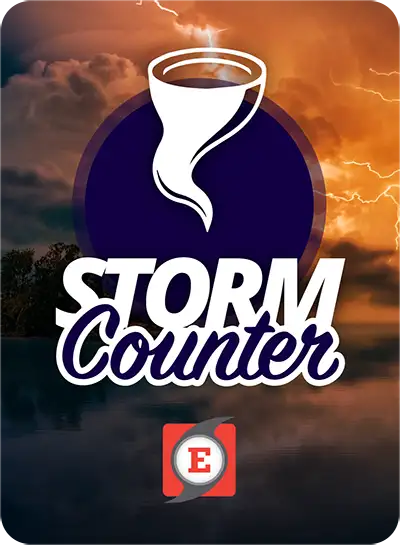Slow play is perhaps the single most contentious section of tournament policy in organized Magic. Many players feel that judges are not doing enough to combat slow play. The goal of this article is to analyze why penalizing slow play is important and to demonstrate just how difficult of a challenge it is to assess consistently.
Why Do We Have Time Limits?
This may seem obvious, but it is important for us to understand why slow play needs to be enforced at all. Magic tournaments can't last forever. Many formats allow decks without fast win conditions to be competitive. In these formats, Magic without time limits could lead to some excruciatingly long rounds while waiting for a comparitively small number of players. It's tremendously inefficient to have most of your players standing around waiting for the next round. Time limits aren't the only potential solution to this problem. Arena qualifier weekends, for example, do not have strictly timed rounds that all competitors must adhere to. Instead, each player is playing for a particular qualifying record and is paired against a player that is ready to play at approximately the same time. Unfortunately, this format is most effective with a player pool many times larger than is found at a Grand Prix. Thus, we enforce a time limit on each round to give players a relatively predictable schedule to organize their tournament experience.
What About Chess Clocks?
MTGO and MTG Arena players on qualifier weekends are familiar with another potential solution to the time limit problem: chess-style play clocks. For those only familiar with paper Magic and not competitive chess, a chess clock is a device that contains two timers each with their own buttons. Only one clock runs at a time and the active clock switches when its button is pressed. The idea is that, in chess, your clock runs during your own turn, then you hit the button when you make your move. Your opponent's clock then runs on their turn, and so on. If your clock runs out, you lose the match regardless of the board state. This is how the clock on Magic Online works and a similar clock is used for MTG Arena qualifier weekend matches. Hopefully, it is obvious why this would never work in paper Magic. Priority is a much more fluid concept in how players play the game in its paper incarnation. Those buttons would be hit near-constantly and likely break after just a few rounds of play. The idea is so impractical that the best argument against it is simply to try it out. It's not pretty.
Why Is Calling Slow Play So Hard?
Hopefully it's clear at this point that while the current system isn't perfect, it's quite superior to some of the other available options. Let me give you an example that illustrates exactly why recognizing slow play is such a difficult thing.
There was a judge conference attached to Grand Prix Denver in 2016 that I attended. One of the seminars was on slow play and the seminar contained a memorable video that I will do my best to convey as its message has resonated with me and informed how I approach slow play to this day.
The video started with a Modern Burn player on their own turn. They had four Mountains in play and five cards in their hand. The player then proceeds to take zero game actions for about 30 seconds. Instead, they're checking life totals, counting the cards in their hand, asking the opponent how many cards are in their hand, miming out damage math, flicking the cards in their hand, and separating their lands as a way to plan out their turn. Then, in quick succession, the player casts a Monastery Swiftspear, attacks with it, casts Lightning Bolt at their opponent, marks down the life total change, suspends two Rift Bolts, and passes the turn. The video stops here. The total turn takes about 40 seconds. Almost every judge in the room would have called this slow play.
The video restarts with the same player in the same position: four Mountains, five cards in hand. This time, the player methodically proceeds through their turn. They do some card-flicking and life total confirmations, then cast the Monastery Swiftspear. They do some combat math, then attack with the Monastery Swiftspear, clarify that they have priority after blockers, and cast Lightning Bolt. They then confirm the total damage and clarify from which source. Post combat, they do some more math with cards in their hand, ask the opponent about how many cards they have, and suspend one Rift Bolt. After reconfirming life totals, they suspend the second Rift Bolt, consider the remaining card in their hand, and pass the turn. Very few judges in the room would have called this slow play. Notice that the exact same list of game actions were taken in this turn.
That turn took 75 seconds.
What Do We Do About This?
Unfortunately, this is the hard part. We, as judges, can always use more training and more experience at recognizing slow play. This is why it's such a common topic at judge conferences. The best thing you can do as a player is to try and make your own play quicker so that an opponent's occasional slow play is less-often a factor in your matches. Also, if you are inclined to ask a judge to watch your opponent for slow play, be mindful of two things: this is more effective the earlier in the round you request it, and the judge will be watching your own play just as closely. I have frequently been called to watch pace-of-play by a player that ultimately ended up receiving a warning themselves. If you believe your opponent is playing slowly, I personally recommend that you ask the judge away from the table. Some players, correctly or not, will see the request as an accusation. This helps nobody and is easily avoided by asking out of earshot. Please keep in mind that judging resources can, at times, be limited to the point of making your request infeasible. Do not take this personally, as it is generally a request we will honor if we can.
I hope this article has given you some insight on why recognizing and calling out slow play can be difficult. It is a nuanced issue and rarely as cut-and-dried as some wish it was. I have been judging for over fifteen years at this point and even I don't get it right every time. It's hard and we all have room to grow when it comes to addressing this issue. Until next time, Storm fair and Storm fun!










